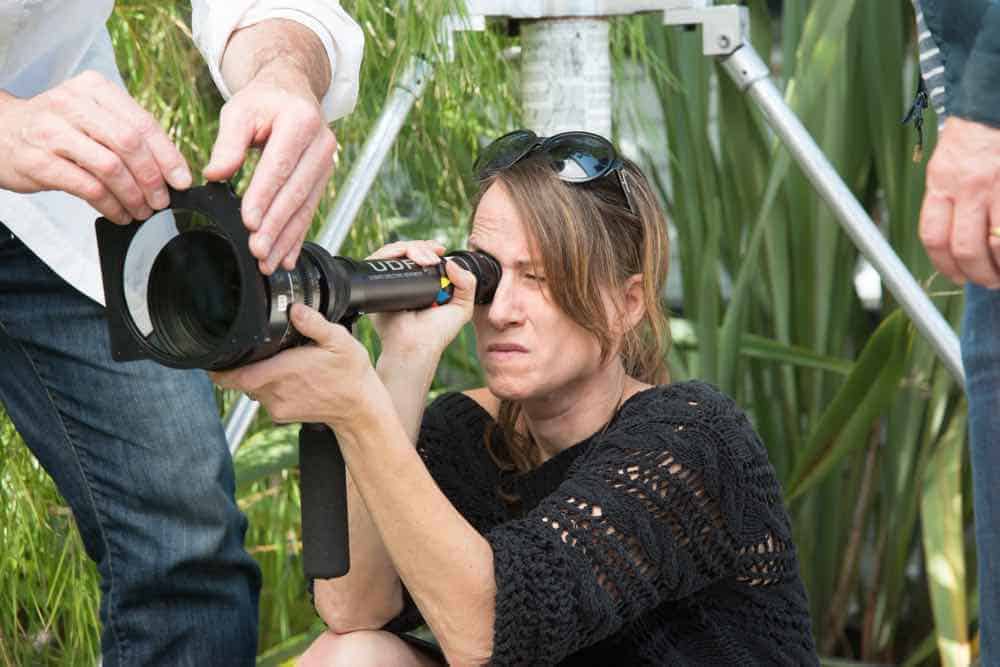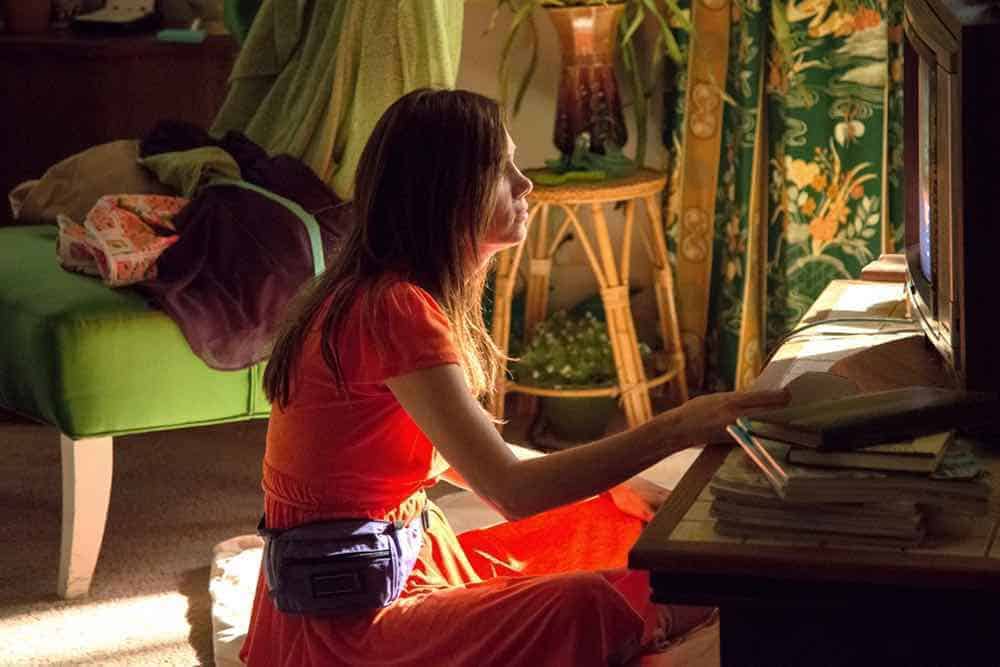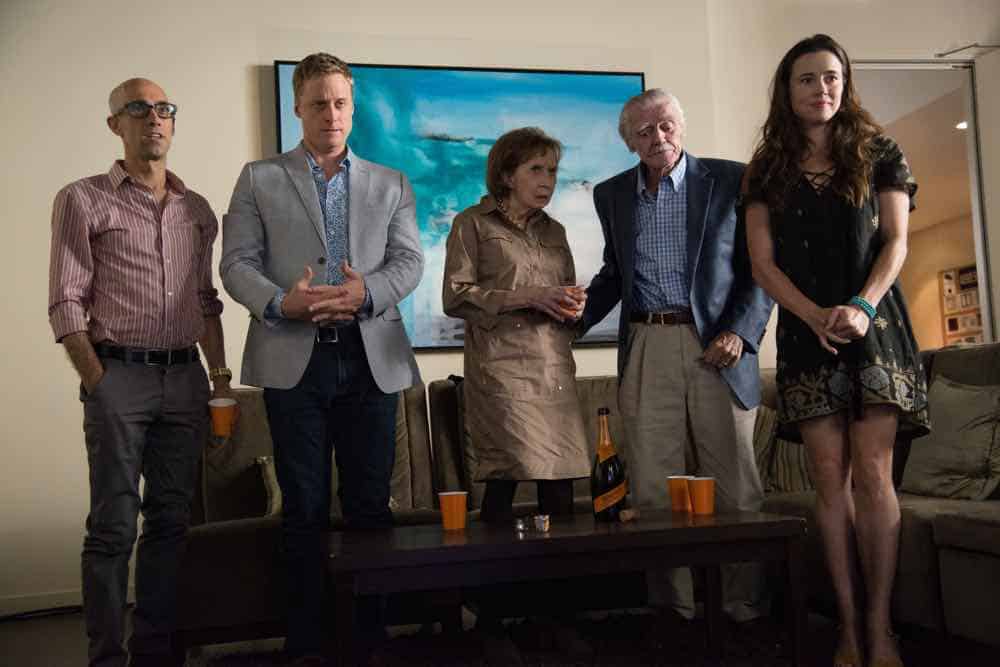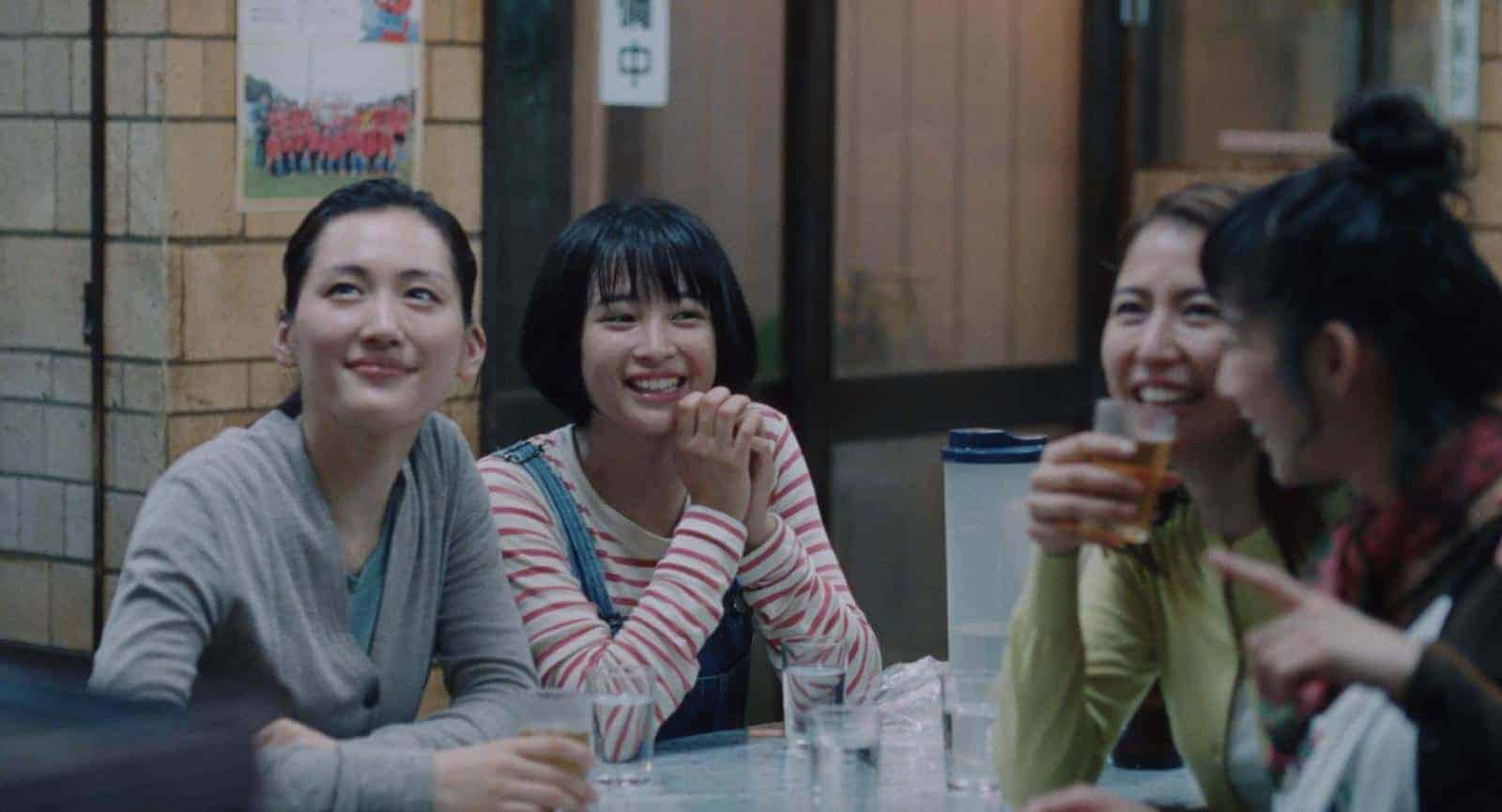Kristen Wiig stars, in Shira Piven’s Welcome to Me, as a woman with borderline personality disorder who wins an 86 million dollar lottery and decides to use her winnings to create her own Oprah-like talk show all about her. The Seventh Row sat down with Piven to discuss her aesthetic approach, the influence of Chauncey Gardner, and finding the music and rhythm for the film.

In Shira Piven’s offbeat comedy Welcome to Me, Kristen Wiig plays Alice Klieg, a woman with borderline personality disorder who wins an 86 million dollar lottery and decides to use her winnings to create her own Oprah-like talk show all about her. Convinced that her newfound wealth will give her a fresh start and a new life — she hasn’t been able to work as a veterinary nurse in years, getting by on disability — she goes off her meds and embraces her kookiness. A fledgling informercial network that’s desperate for money proves the perfect place to develop her show, despite the bafflement and consternation of her producers (Joan Allen and Jennifer Jason Leigh) at some of her more ridiculous requests, like her insistence on making her entrance on her show in a swan boat.
Piven and screenwriter Eliot Laurence find the perfect balance between gawking at Alice’s alien ideas for humour without ever becoming cruel or nasty. Alice’s eccentricities, some of which are part of her condition, are the driving force of a lot of the comedy, from her insistence on wearing fanny packs, to her propensity for inappropriate sex, to her completely absurd ideas about what qualifies as entertainment.
Although the film risks minimizing the severity of Alice’s condition and never quite goes anywhere — her show is a surprise success but she alienates loved ones along the way, becoming increasingly self-absorbed — it’s utterly charming and absorbing. Wiig’s comic timing is particularly an asset, finding odd rhythms to Alice’s speech and movements, which never feel forced but are often funny. Featuring an all-star cast including Linda Cardellini, Wes Bentley, James Marsden, and Tim Robbins, it’s a good time at the movies in spite of some flaws.
The film screened at the San Francisco International Film Festival earlier this week and was followed by a Q&A with director Piven on Monday. The Seventh Row sat down with Piven to discuss her aesthetic approach, the influence of Chauncey Gardner, and finding the music and rhythm for the film.

The Seventh Row (7R): The film has a lot of warm colours in it, and it seemed to me that the cinematography was always at the service of the performers, to let them take centre stage. What was the process for deciding on the aesthetic and collaborating with your cinematographer, Eric Edwards, to achieve this?
Shira Piven (SP): That’s a great question. We wanted to capture some of the feel of Palm Desert. For me, it is the desert, but it is also kind of a weird time warp. I wanted to capture some of the timeless quality. It felt, to me, that this movie needed to have a bit of a timeless feel. I definitely didn’t want to fool anyone. I didn’t want them to think “Oh, this is set in the ‘70s.” But I did want to borrow a little bit of that aesthetic of ‘70s movies that has a depth and reality to it.
My cinematographer Eric Edwards (who also shot the movie Kids) and I sat down, and we talked about other films that we liked the look of. We talked about John Cassavetes’ Woman Under the Influence, and we looked at moments form All that Jazz. I actually specifically wanted the beginning of our movie to look like the beginning of the movie Being There, which to me was kind of a touchstone film for us.
I was obsessed with the relationship between Alice and the camera and how far the camera is from her. I kept thinking the camera needs to be not too close and not too far away. We want to have the right distance from her. We almost want to be at a friend distance, so that we can see her with compassion, but we’re not up in her face all the time, and we’re not too far away so we have too much distance.
Ultimately, I like collaborating with people who are good and let them do their thing. Erik also had a great second camera operator, and he sometimes just made a suggestion that we should shoot a scene handheld at the last minute. I was so excited about that. I didn’t plan on doing it initially, but we picked the right moments to use handheld camera, and it really added to the intimacy and to the life of the movie. We definitely spent a lot of hours talking about the movie shot by shot.
7R: The timing and the rhythm are so important in the film. On set and in the cutting room, how do you make sure you’re getting things at the right rhythm and speed?
SP: When you’re shooting, I think you have to know the script really well and know that there’s a moment that you might want to slow it down — that you might want to get a slow motion version of that scene. You just have to be intimate enough with the script.
For me, and I think this is probably my strength as a director, it’s knowing the emotional map — that sounds like a clinical word, and I don’t mean it that way — but knowing the emotional life and the ups and downs of the movie and knowing “OK, this moment really feels like we all just need to take time with it. We might want to film it in slow motion. Maybe this moment is stylized. Maybe we want to speed this up.”
That’s where you have the choice of rhythm in the edit room, because rhythm is really created in the edit room with the timing of the edits and music. If you also have slow motion to play around with, then you have another tool to play around with when you’re putting the film together.

7R: Did you know what specific music you wanted to use even before you started shooting or was that something that came afterward, shaping the music to the rhythm of the film?
SP: Music in this film was really hard because it might not need music. I come from a music background, as well, and yet I found the music in this just really kicked my butt, trying to find the right sound for this. Not the songs: songs were really fun to find, and those are some of the fun moments, musically, where we choose a fun song by Mrs Miller, who’s this really terrible [singer]: [a] middle-aged woman with a bad vibrato and does all kinds of bad covers. She does a cover of “Catch a Falling Star” in the movie.
Finding the sound for the score was trickier. [With] some movies, I feel like you kind of know the sound going in. But with this one, we had to sort of search for it. The composer and I eventually found a little bit of an almost like slightly fairty-tale-ish distance quality to the music without being too heavy-handed. I think the music tells us that this world is slightly heightened without doing too much.
7R: It’s interesting trying to figure out when the film takes place. Alice has all of these VHS tapes, and she’s walking around with a fanny pack, but it also feels very contemporary. How did all of those things come into play?
SP: I really wanted it to be a timeless feel, but I didn’t want to fool anyone. In the first fifteen minutes of the movie, Joan Cusack’s character says, “Can somebody google that?” So we know it’s contemporary. Later on, Alice and the character of Rainer, played by Thomas Mann, they watch something on his cell phone. They watch a YouTube video of Alice. But the look and feel of the world is a bit of that classic, timeless feel. I wanted to somehow achieve both.
I think there are many parts of our country — if you go to certain cities in the South or the MidWest — that feel like they’re stuck 30 years ago. Some little towns feel like 50 or 60 years old combined with and layered with all of the subsequent decades. But I like that idea, because we’re not married to the current day aesthetic, so I think it gives us a broader perspective on what we’re seeing. It also helps with the slightly heightened feel of it. There’s a little bit of a poetic reality to me.
Welcome to Me is now streaming on Netflix and VOD.
[social_warfare]

